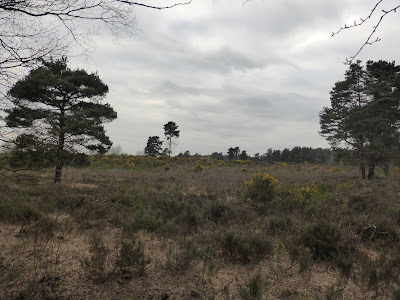The wife and I recently had a holiday in Southern Ireland, county
Wicklow in fact. Here are some of the
places we visited:
 Wicklow Gaol: This was our first visit of the week. Wicklow Goal
is now museum. I anticipated before we
went in that it would likely be a monument to British oppression of the Irish
people. (Unfortunately for Ireland much of its history is covered by the history of
British rule). I was right about this but I was glad to see that the story was
told without any bitterness on the part of the Irish; one came out feeling the
Irish still want to be friends with their somewhat larger neighbour. And a good
thing too; we need friends like that! As an aside: We neither felt nor saw any
of the many ghosts that are supposed to inhabit this building!
Wicklow Gaol: This was our first visit of the week. Wicklow Goal
is now museum. I anticipated before we
went in that it would likely be a monument to British oppression of the Irish
people. (Unfortunately for Ireland much of its history is covered by the history of
British rule). I was right about this but I was glad to see that the story was
told without any bitterness on the part of the Irish; one came out feeling the
Irish still want to be friends with their somewhat larger neighbour. And a good
thing too; we need friends like that! As an aside: We neither felt nor saw any
of the many ghosts that are supposed to inhabit this building! Glendalough: This is the ruins of a once busy monastic
town. It is actually located in a glacial valley and as I looked around me I
could see the high walls of the U-shaped profile of glacial action. The
inhabitants of that town would no doubt have unconsciously viewed the landscape
around them as ancillary and incidental to the cutting edge of creation; namely Man’s dealings
with God. Today, however, we find such a
vision much more difficult to take for granted.
Changes in our perspective of time and space tempts us to view humanity
as the ancillary objects, almost like inconsequential insects crawling around
in the corners of the huge vista of a cosmic stage. When one understands something of
geological history the setting of Glendalough, it only reinforces this tempting
thought: This epic landscape with its huge space-time dimensions dwarfs human activity.
It is easy to appreciate why Christian fundamentalists fail to come to terms
with the cosmic perspective and can only cope with it by shrinking the cosmic backdrop
to pre-scientific time scales and sometimes even returning to geocentric and
flat earth cosmologies.
Glendalough: This is the ruins of a once busy monastic
town. It is actually located in a glacial valley and as I looked around me I
could see the high walls of the U-shaped profile of glacial action. The
inhabitants of that town would no doubt have unconsciously viewed the landscape
around them as ancillary and incidental to the cutting edge of creation; namely Man’s dealings
with God. Today, however, we find such a
vision much more difficult to take for granted.
Changes in our perspective of time and space tempts us to view humanity
as the ancillary objects, almost like inconsequential insects crawling around
in the corners of the huge vista of a cosmic stage. When one understands something of
geological history the setting of Glendalough, it only reinforces this tempting
thought: This epic landscape with its huge space-time dimensions dwarfs human activity.
It is easy to appreciate why Christian fundamentalists fail to come to terms
with the cosmic perspective and can only cope with it by shrinking the cosmic backdrop
to pre-scientific time scales and sometimes even returning to geocentric and
flat earth cosmologies.
The central tower of Glendalough is its most notable feature: In the heyday
of the monastic town it is thought to have served as a bell tower dividing up
the day into its devotional segments; it was in fact the sacred equivalent
of the city clock towers necessary for the marking out of secular time
with a clock and bell before cheap mass produced time pieces were available to
all.
Glendalough is now a town of the dead; It is still regarded as sacred and much of it covered by a grave
yard that is in use today. I find some of the funerary paraphernalia that goes
together with death full of pathos, a cathartic and apparently futile gesture in the
face of the inevitability of termination. (See also here)
Aughrim: On the last day we walked round the small town
of Aughrim not far from where we were staying. We had lunch by the gently
chattering stream that passes through Aughrim. I reflected on the fact that
this beautiful country with its neat well-kept shire-like feel is nothing short
of a rural idyll. And yet southern Ireland is remarkably under-populated. There is
in fact a very large Irish diaspora which dwarfs the 4.6 million inhabitants of
Ireland. Sometimes an idyll can seem like heaven, a place where one wants to be
for eternity. But in this world it is
difficult to tame the ambitious human spirit even with a mock paradise, a
spirit that so often is looking for more. Sitting by a gently chattering stream
is a solace and balm, but if you are ambitious you eventually get bored and
have to move on. Many Irish people have done just that to the benefit of the
world as a whole I would have thought!
Aughrim's quiet waters, but the allure of pastures new is always there.








